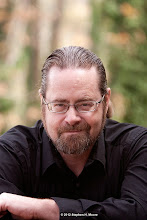This week’s post will have to be a short one as I’m still in
transit. That’s okay. I suspect that just makes everyone glad that Mister Wordy
is behaving himself for a change of pace.
So here it is: Scenes.
(This is my random book cover of the week. I sort of think it fits. Don't judge me.)
Keep in mind that I have never exactly followed the standard
rules on this. I know the rules; I just don’t always like them. For me scenes
should be short but only as short as they need to be. There are times where the
scenes should be substantially longer, like when you’re building suspense, and
suspense works best if you don’t rush it.
That said, I think the main purposes of scene changes come
down to the following things: to show a break in the amount of time that has
passed and to differentiate between perspectives. In the case of showing a time
shift, you could possibly just continue on with the same scene and add in a
sentence like: Several hours later, when
the sun had finally set and the traffic around him had slowed down, Detective
Miller climbed out of his undercover car and approached Dan Lander’s apartment,
once he was certain that no one had noticed him. (Yes, I KNOW it’s not a
great sentence. Like I said, I’m doing this one while on the road. But it makes
the point.) You could do it that way, but I hate that sort of sentence, even
when I use them myself. I think they slow down the pacing of the book.
Instead I prefer to add in a scene break. Miller climbed from his car and checked the
area again, making sure he didn’t have witnesses. He’d waited for traffic to
die and the sun to set. It was time to do take care of business. Really, it’s
a matter of preference in this case.
The other reason I use scene breaks is to shift
perspectives. I usually right in third person and make sure to use a limited
perspective. I don’t like to narrate from an omniscient perspective because I
prefer the readers learn at the same time as the characters, and because I
prefer the intimacy that is achieved from being inside the head of one
character at a time. But I also like to be in the heads of different characters.
The difference in perspective can heighten the action in a scene. If Detective
Miller is a dangerous cop or a brutal cop and the man he’s been waiting on is
smaller, nervous or just possibly waiting behind the door of his apartment with
a machete in his sweating hands, seeing things from his perspective might very
well heighten the drama of the moment by a few degrees. So to, hopefully, avoid
confusing readers I shift perspectives with a scene break. Our possibly
ill-intentioned detective gets one scene. Then it might be Suspect Dan’s turn.
Or, for that matter, I might introduce Lana, the attractive witness to Miller’s
murderous intent, and let her watch as the scene unfolds. She would then see
two men fighting to the death (or having a secretive discussion) from fresh
eyes. Working from the new perspective could heighten suspense, add to the
mystery or simply allow for a break if I am not quite ready to reveal all that has
to be told in that chapter.
In this case, the change of perspective is sleight of hand.
I don’t want the reader to see all of my cards, or to see what I’m hiding up my
sleeve.
The third option is what Charles R. Rutledge and I did for
BLIND SHADOWS and CONGREGATIONS OF THE DEAD. We had no chapters at all, preferring
to use the scene breaks to switch perspectives and give the reader a chance to
put the book down without ever giving them the more traditional stopping point
of a chapter break. The reason? We wanted to make the book move faster.
Apparently it worked, too. Several people kept reading well past the point
where they would have stopped if there had been a chapter break, thus ensuring
that at least in some cases the book became a fast read and that’s what we were
aiming for.
There are other reasons, of course, but I’ll leave those for
the rest of the team to discuss.
Your mileage may vary.
Jim


